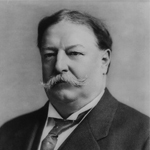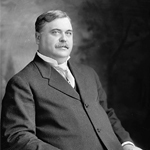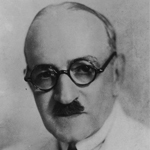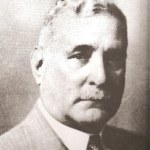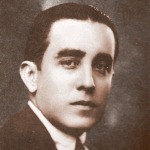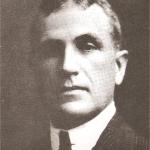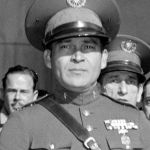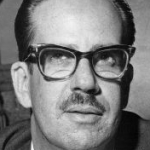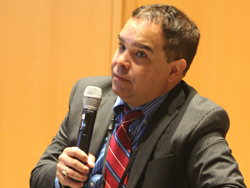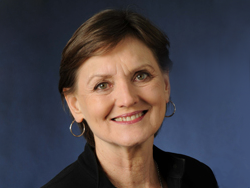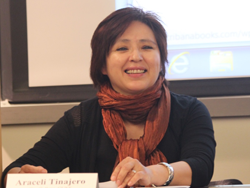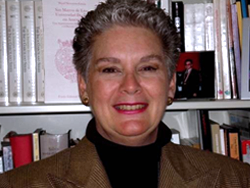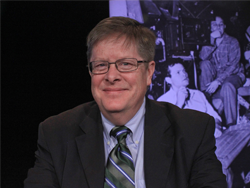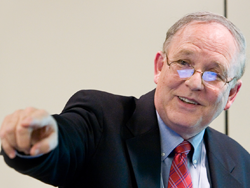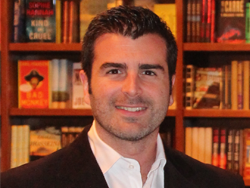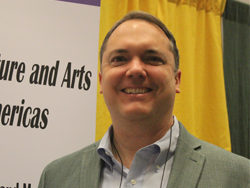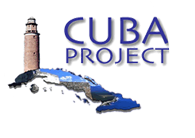The Chronology of Cuban Politics, 1890s – 1950s and Gallery of Cuban Heads of State, 1902-1959 were created to complement Cuba Project’s seminars on Democracy and Revolution in Cuba: the Republic (February 5, 2016) and The Struggle for Democracy in Cuba: The Republic (October 30, 2015).
Chronology of Cuban Politics, 1890s-1950s
| 1892 | Organization of the Partido Revolucionario Cubano (PRC); goals are to gain independence and establish republican government. |
| 1895-1898 | War for independence. Battle at Havana Harbor [1989] and defeat of Spain. |
| 1898-1902 | Cuba under U.S. military rule. |
| 1901 | Cuban Constitution drafted at the Constitutional Convention. Consists of 115 articles including the Platt Amendment, which keeps the island under U.S. protection and jurisdiction, and grants the U.S. a permanent naval base at Guantanamo Bay. |
| 1902 | Tomás Estrada Palma is elected president (former leader of PRC in exile in the U.S.) |
| 1903 | Reciprocity Treaty of 1903 ties the Cuban and U.S. economies. |
| 1904 | Congressional elections marred by sporadic violence and voter fraud. |
| 1905 | Estrada Palma seeks reelection. Alfredo Zayas and José Miguel Gómez join forces and run against him. Elections held December 1st indicate voter fraud. Zayas and Gómez drop out in protest and Estrada wins the election. |
| 1906-1909 | Uprisings against the elections lead President Estrada Palma to resign. With no government U.S. forced to intervene, leaving Charles Edward Magoon in charge until January 1909. |
| 1907 | Afro-Cubans agitated by a lack of compensation from the Independence War form The Independent Party of Color, the first political party based on race. |
| 1908 | Municipal elections. The Conservatives, formerly under Estrada Palma’s leadership, are successful in 28 municipalities. The Historic Liberals, under the leadership of José Miguel Gómez, win 35 municipalities and the Liberals, under the leadership of Alfredo Zayas, win 18. After uniting the Historic Liberal Party and the Liberal Party, Gomez and Zayas win the presidency and vice presidency respectively. |
| 1909 | Magoon transfers power to newly elected President Gómez and troops are withdrawn on March 31. |
| 1910 | The Independent Party of Color grows in numbers and importance. The “Morua Law” forbids the creation of political parties based on race or color. |
| 1912 | Approximately 6,000 Blacks rebel causing U.S. intervention. Gómez supports presidential nominee Mario García Menocal, a Conservative associated with American sugar interests. Menocal defeats the Liberals. |
| 1913 | President Menocal is sworn into office. |
| 1914 | Municipal elections with different parties now represented in government. Introduction of the Partido Liberal Unionista (PLU) and the Partido Liberal Provincial (PLP). |
| 1916 | President Menocal wins reelection. |
| 1917 | Ex-president Gómez and the Liberal party rebel after voter fraud is revealed. The Chambelona Uprising forces supplementary elections and Conservatives win. |
| 1918 | Partido Liberal Unionista, Partido Liberal Independiente and Partido Liberal Provincial gain seats in the legislature during midterm elections. Women’s suffrage becomes a rallying point for feminists and politicians from the Liberal and Popular parties. |
| 1919 | American General Crowder back in Cuba to amend laws and enforce voting practices. |
| 1920 | President Menocal hands presidency over to ally, Alfredo Zayas causing the U.S. to intervene. |
| 1921 | General Crowder returns to Cuba and holds a meeting with Zayas, Gómez and Menocal. Not able to appease all three groups, the U.S. recognizes Zayas as President. |
| 1922 | Midterm elections; Crowder loses faith in Zayas’ cabinet members. |
| 1923 | Different sections of society organize to denounce the government. The first Cuban National Women’s Congress held in Havana on April 1st. |
| 1924 | Zayas loses support of the Conservatives as they choose ex-President Menocal. Alfredo Zayas supports Liberal nominee, Gerardo Machado, who wins on a platform of nationalism, transparent governance and cooperation between major political parties. |
| 1925 | The Partido Communista de Cuba (PCC) forms and is quickly outlawed. |
| 1926 | Midterm elections show the dominance of the Liberal, Conservative and the Popular Party. |
| 1927 | Machado extends his presidential term. |
| 1928 | Constitutional reforms allow Machado to stay in power until 1935. His “Ley de Emergencia Electoral” prohibits presidential nominations from parties other than the main three. He is the chosen nominee of all three. |
| 1929 | Arrest of many protestors and death of a student leader; growing opposition. |
| 1930 | State of siege declared. |
| 1931 | Violence from various political groups trying to create conditions for revolution deepen economic crisis; many people unemployed. Machado suspends several news sources. |
| 1932 | Violence increases; new groups sabotage and kill government officials. The police respond with harsh repressive measures. |
| 1933 | The Revolution of 1933. Political and economic stress contribute to daily bombings, kidnappings, urban and rural violence. Machado steps down. Céspedes becomes provisional president. Céspedes restores the Constitution of 1901, removing the alterations Machado added. A “Sergeant’s Revolt” planned by Fulgencio Batista takes control of the island’s military forces. Student groups select Ramón Grau San Martín as provisional president. This administration abrogates the Platt Amendment, encourages unionizing, grants female suffrage, redistributes land and nationalizes the labor force. |
| 1934 | Grau San Martín resigns in January 1934 and Mendieta becomes president. Elections are scheduled for the winter. The US abandons its right to intervene in Cuba’s internal affairs, revises Cuba’s sugar quota and changes tariffs to favor Cuba. |
| 1935 | The Mendieta government collapses and Secretary of State José Barnet becomes provisional President. Batista controls government through him. |
| 1936 | Miguel Mariano Gómez is elected President and his party wins a majority of Congressional seats. Later Gómez is overthrown and Federico Laredo Brú becomes president. |
| 1937 | Different factions of the opposing Auténtico party unite. |
| 1938 | The Communist Party becomes legal. |
| 1940 | The Constitutional Assembly of 1939 features two coalitions vying for power. Controlled by Batista, one includes the Democratic Socialists, Unión Nacionalista, and Liberal Party. The other one, PRC (A), or Auténticos, includes the ABC, Menocal supporters and other minority parties. The latter “favored government control of the sugar industry, establishment of a Tribunal of Accounts and a National Bank, a budget law, tax reforms, a civil service system, creation of a merchant marine, the expansion of education…” (Gil 378). The Constitution of 1940 acknowledges universal suffrage, limits presidential power, strict term limits, grants political and civil liberties. |
| 1942 | Batista defeats opposition bloc in partial elections, increasing his majority in Congress. |
| 1944 | Civilian Ramón Grau San Martín, of the PRC (A), elected president. |
| 1945 | Auténticos establish a policy of stabilization of sugar prices and distribution of wealth. Sought to reduce the dangers of a one-crop economy, gave impulse to a social security system, and financed a vast educational program (Gil 378). |
| 1946 | Auténtico Party wins majority of both Houses. Accused of corruption and dishonesty leads to the formation of the Party of the Cuban People (Orthodox). “The break with the Auténticos was justified by three factors: first, corruption; second, slowness in the reform program; and third, the belief that the party leader, Grau San Martín, intended to handpick his successor” (Gil 341). |
| 1947 | Alliance between the Auténticos and the Communists is broken. |
| 1948 | Carlos Prío Socarrás wins the presidential election as the Auténtico candidate. |
| 1950 | The Ortodoxos, led by Senator Chibás, argue for clean and efficient government. |
| 1951 | Chibás commits suicide but many say would have won the 1952 election. |
| 1952 | Batista launches a coup and dissolves all political parties. |
| 1953 | Student and urban guerilla organizations revolt against the Batista regime. Leaders of the Auténticos and the Ortodoxos sign The Montreal Charter, which specified cooperation and restoration of the 1940 Constitution (Ameringer 335). |
| 1954 | Batista runs for office unopposed. |
| 1955 | Political groups and leaders opposed to Batista form the Sociedad de Amigos. |
| 1956 | Violence between students and the police prompts Batista to close University of Havana. Fidel Castro lands in eastern Cuba and wages a guerrilla war. |
| 1958 | Rebel forces have control of the island. Batista flees on December 31st. |
| 1959 | Castro becomes the new leader of Cuba. |


